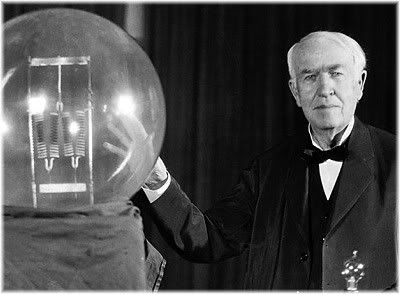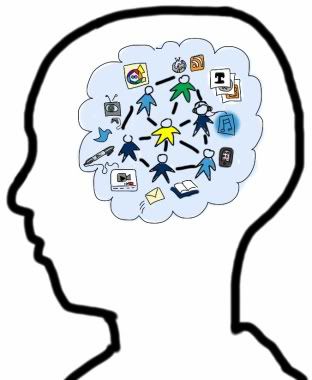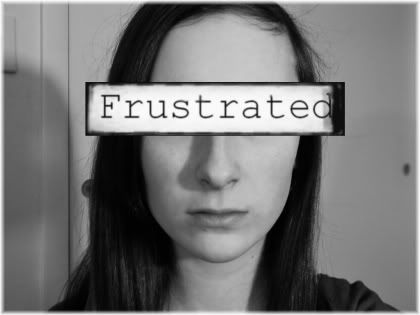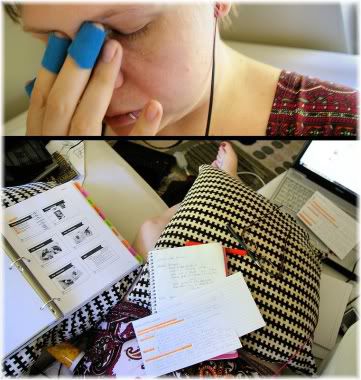Trying to ignore how you feel about something can not only make those feelings worse, but it can also cause you to feel frustrated. This occurs because whenever you keep doing something that doesn’t satisfy your unfulfilled needs, you start to feel frustrated with your efforts because nothing you do seems to work.
If you ignore this frustration then the pain that you experience from your initial feelings will intensify, which, if left unchecked, could eventually lead to depression.
So the underlying message that frustration tells you, is that what you are currently doing to satisfy your needs is not working and so you should try doing something else.

Otherwise, if you keep doing what you are doing, then the pain of your unfulfilled needs may become so great that you will no longer be able to cope.
This is why, just like all our other feelings, it is important to listen to frustration because it tells you how you can live a more satisfying and fulfilling life.
The importance of your needs
The feeling of frustration comes as a result of not being able to satisfy your needs, wants or desires through your own actions and efforts.
Remember this point because it’s an important one, as people tend to feel happy with their lives in direct proportion to the amount of personal control they have over it.
If you feel that you have lots of control over the way your life is, then you are likely to feel happy and content. However, should you be in a situation where you have little control over how things turn out, then you are less likely to feel happy and content.

The reason for this is simple. People who do not have control over their life are filled with feelings of uncertainty and insecurity, because they are at the mercy of someone or something else. This same principle applies to frustration.
When you are frustrated because nothing you do seems to give you control over your life, you begin to experience the feelings of uncertainty and insecurity, both of which generate fear.
This fear comes as a result of some perceived danger (either physical or emotional), which, because of your lack of personal control, you feel as though you are unable to avoid.
The frustration train
Frustration is therefore a bit like being trapped on a railway line with a fast approaching train.
If you are stuck and unable to free yourself, you will become frustrated because you are unable to control your surrounding environment (i.e., escape from the train).
This loss of personal control will then lead to feelings of uncertainty and insecurity as you start to wonder whether you will be able to escape in time.

As you see the train approaching, but are still unable to free yourself, you start to feel fear because you are at the mercy of someone/something else.
You then start to wonder whether the train will see you in time and be able to stop? Or if perhaps there will be someone nearby who will suddenly come to your aid?
Whenever you experience frustration, just think of the train analogy. The frustration you experience means that what you are currently doing is not working, and so you should try something else before you get flattened by the train!
The Two Ways to Stop Feeling Frustrated
When it comes to stopping your frustration, there are only two ways that it can be done.
1) Find a Satisfying Response

The first, and also most desirable way, is to find a satisfying response to the pain caused by your feelings. This would involve taking some course of action which is effective in fulfilling your currently unfilled need.
For example, if you are lonely, and as a result of your actions you find a good friend or companion, then your feelings of loneliness will quickly fade away. Since you have now successfully satisfied your need for a relationship, your feelings of frustration from trying to find a partner will also disappear.
This is the ideal approach, and what we should all aim for, as it’s the only true way to feel satisfaction and fulfilment in your life.
2) Stop Trying to Fulfill Your Needs

The second approach to ending your frustration is to stop trying to fulfil your needs altogether. This will result in a reduced level of frustration, but because you are no longer taking any action, your needs remain unfulfilled and so you will continue to experience the pain that comes from its associated feeling.
So using the previous example, if you are lonely then you could stop looking for people to form a relationship with. This will end the frustration that comes from being unable to find a friend or companion, but will still leave you feeling lonely.
The Avoidance of Pain
The avoidance of pain is one of the main reasons why people give up on their hopes and dreams. This is because it’s often far less painful to give up on something which you have been struggling to get, than it is to persist through your frustration and continually try new ways to succeed.
A good example which shows just how important persistence can be during difficult times, can be found with the inventor Thomas Edison. When asked about his 10,000 experiments in which he had failed to develop a storage battery, Edison is quoted as saying:
“I have not failed. I’ve just found 10,000 ways that won’t work”

Whereas most people would have given up after a few attempts, Edison persisted through his frustration by continually trying new things until he reached his goal.
Even though he may not have been successful with all his inventions, his determination and persistence is an example from which we can all learn a great deal.
Giving yourself time to recharge
Whilst giving up on your goals is generally not a good idea, in some cases, it can be. For example, if you are continually causing yourself more and more frustration through repeated ineffective actions that result in failure, you could eventually spiral into depression.

So sometimes, it’s a good idea to take a step back, stop what you are doing and give yourself a break. By doing so, you can then reflect on the actions which you have taken so far and try to come up with a new way of doing things.
By stepping back for a while you are not completely giving up on your ultimate goal, but rather, you are allowing yourself some much-needed time to recharge before you start working again.
The take away message is that being aware of the feeling of frustration will allow you to minimize the pain that you experience from it, because you will quickly know when your current actions are ineffective and when it’s time to try something else.
4 Steps to Ending Frustration
Use the following guidelines to help you overcome and respond appropriately to the feeling of frustration. With practice, you should find these steps easier to implement and experience better results.
1) Remember the Meaning

The feeling of frustration tells you that what you are currently doing to satisfy a need is not working, and so you should try a different approach.
2) Identify the Feeling

Frustration makes you feel as though you have little or no control over your surrounding environment. It can also make you feel like giving up because nothing you do is getting you what you are trying to achieve.
Fear and anger are two common feelings that are associated with frustration.
3) Decide Why You Are Feeling Frustrated

If you are feeling frustrated ask yourself “What am I doing that is not working?“, “Are my feelings of frustration coming as a result of me trying to distract myself from my feelings?“.
4) Do Something to Change Your Feelings

To end your frustration, you need to do something that satisfies a currently unfulfilled need. To do this, first determine which feeling or feelings are currently causing you pain, and then determine what message they are trying to communicate to you.
Some of the feelings that can lead to frustration, and the possible message they may be communicating, are:
Boredom (the need for mental stimulation)
Anger (a feeling that something is unjust)
Fear (you feel threatened by something)
Sadness (you are not happy with the way things are)
Loneliness (the need to be with others)
Stress (you need some time to relax)
Feelings of inadequacy (you don’t feel confident in your abilities)
Which one of these do you think is causing you to feel frustrated? What can you do to resolve that frustration?
At this point, it’s worth bearing in mind that the actions you take will not necessarily result in a reduction or elimination of your frustration. This is because your actions may not fulfill your needs thereby causing you to continue feeling frustrated.

This is where persistence comes in. As in order to get through challenging times like this when nothing seems to be working for you, you must be willing to continually try new approaches until you succeed.
Only when you take an effective course of action that results in the fulfilment of your needs, will you then be able to get rid of your frustration.
Identifying the cause of your frustration
Sometimes, the feelings of frustration that we experience can be so powerful that they disguise our true feelings from us. This can result in us feeling frustrated without knowing why or without knowing what need our frustration is trying to help us fulfil.
When this occurs, and you are unsure of what feeling is causing your frustration, try to break down what is happening to you by reverse engineering the situation. To do this, ask yourself questions such as:
“What is causing me to feel frustrated?“
e.g., my computer keeps crashing
“What is it I am trying to do?“
e.g., finish my work
“What need am I trying to fulfil?“
e.g., my need for growth and development
Once you have an idea of what need you are trying to fulfil, you will be in a better position to understand what your primary feeling is.
So continuing the example given above, I might decide that my primary feeling is anger because my computer keeps crashing when I am trying to do my work.

Once I understand my primary feeling, I can then respond appropriately to it by remembering the message that anger is trying to tell me. Anger tells me that something about this situation is unfair or not right, and so I should do something about it to make it right.
An appropriate response to this anger could involve finding another computer to work on, or doing something to fix my computer.
If I had not done this reverse engineering process to discover my primary feeling, I may have instead responded inappropriately to my frustration such as by hitting the computer monitor.
This of course, would not have satisfied my need and only left me feeling more frustrated.
What to do if nothing works
If you are already aware of what your primary feeling is, but are still experiencing frustration as a result of your efforts, this may be for several reasons.
• You are not putting as much effort into it as you should.
• You are not being consistent with your efforts.
• You are expecting immediate results and not giving yourself enough time to do it right.
• Your method of satisfying your unfulfilled need is the correct method, but you need to alter it slightly.
• What you are doing just isn’t working, and so you need to try a completely new approach.
Whatever the cause may be, just remember that by trying harder at something which doesn’t work will only cause you more frustration. So try to get creative and think of new ways to tackle the problem.
Summary
The feeling of frustration comes as a result of unsatisfied primary feelings, which tells us that what we are currently doing to satisfy our needs is not working and so we should try doing something else.
Listening to frustration can prevent you from entering depression, which will eventually occur if your needs continue to remain unfulfilled.
By listening to frustration, you can minimize the pain that you experience from it and your primary feelings by taking an effective course of action that results in the fulfillment of your needs.
Reviewed – 1st April 2016
